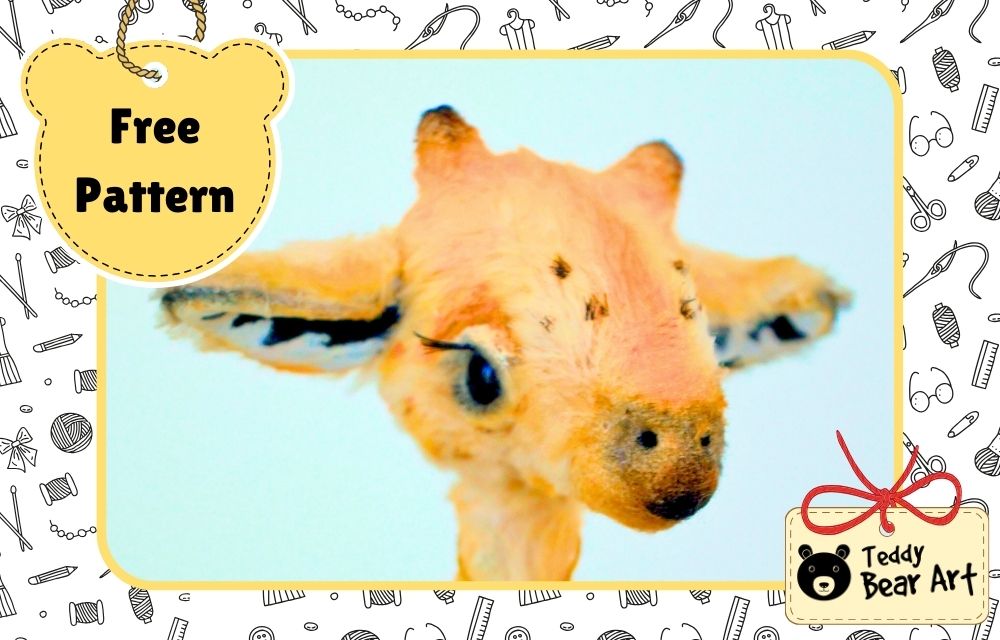Looking for how to make giraffe stuffed animal? This project is designed for skilled makers who feel confident working with miniature details and enjoy more advanced teddy techniques. A tiny giraffe looks delicate and sweet, but behind its gentle appearance lies careful shaping, precise stuffing, and detailed finishing.
This pattern is perfect for those who want to challenge themselves and create a little creature that almost feels alive in the palm of a hand.

Download the Pattern
Notice that seam allowances are not included.
To download the pattern, follow the instructions below:
From a phone or tablet: There should be a similar option for mobile devices with Android or iOS. Click on the image. Save it by holding your finger on the image and selecting the “Save Image” option. Then, go to your photo gallery and print it (an option available).
From a computer: Click on the photo of the pattern you see below. In the new tab that will open, you press the right mouse button and select the “Save image as …” option. Then, you choose where the image will be saved on your computer.
Materials You Will Need
- Viscose fabric with a pile length of 6 mm
- Small glass eyes with metal loops
- Joint discs, 6 pieces of 9 mm for head and arms, plus 4 discs for legs
- Metal washers
- Five T-shaped cotter pins
- Thin elastic fabric for the inner ear parts
- Oil paints
- Acrylic paints
- Clay for the hooves
- Thread for the mane and eyelashes, or two small bundles of artificial eyelashes
- Felt
- Glue
- Merino wool for the tail tip
- Pliers
- Awl
- Thread and needle
- Stuffing material
- Weighting material
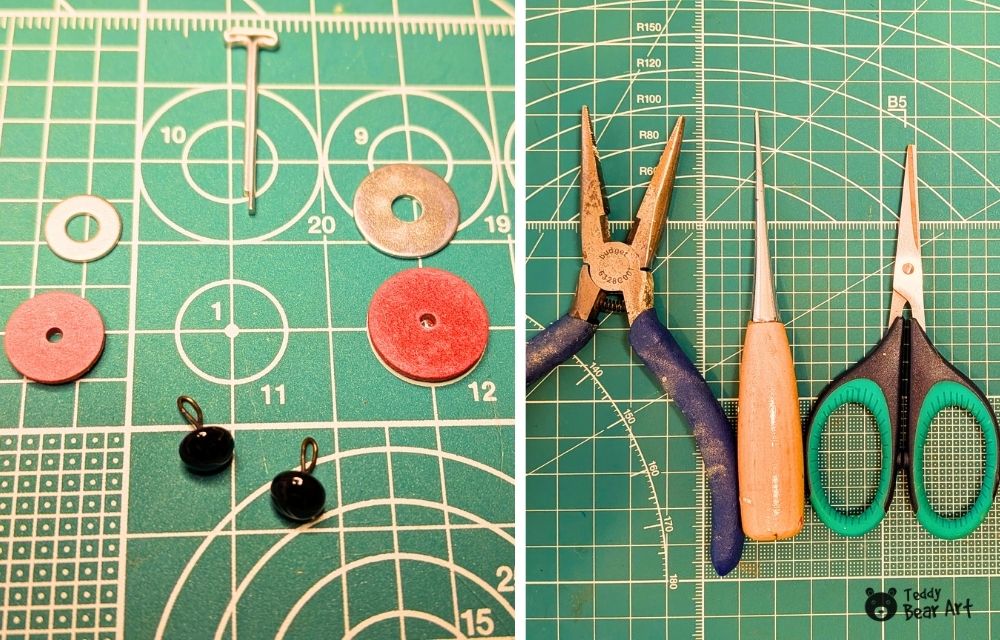
Step-by-Step Making Guide
1. Creating the Head
Work on the giraffe begins with preparing the head, since its expression sets the entire mood of the toy. First, the pile on the nose area is removed with tweezers on both head pieces and on the head gusset.
This creates a clean foundation for the future muzzle and helps achieve the soft, baby-like look typical for young giraffes. After that, the darts marked in green are stitched, forming the initial contours of the face.

Once the darts are closed, the head pieces are joined along the A to B line, and the head gusset is sewn in place from A to C. The final seam, from C to D, closes the shape completely.
When all seams are done, the head is turned right side out, gently stuffed, and prepared for jointing. A disc with a cotter pin is inserted, the fur is teased out of the seams, the tiny horns are trimmed, and the muzzle is shaped with delicate scissors work. Light brushing brings back softness and volume.

Next comes shaping the expression. Small nostril indentations are formed using thread sculpting, followed by defining the area around the eyes. When the basic facial features are in place, the eyes are inserted, giving the little giraffe its first spark of personality.
Eyelids made from felt can be glued on or lightly felted, depending on the desired finish. At this stage, the head is set aside until the rest of the body is ready for coloring and final detailing.

The ears come next. They are tiny and delicate, so after stitching, they’re turned right side out with the help of a thin tool. The inside of each ear is gently painted with acrylics or oils, following soft natural markings.
Acrylics dry quickly, while oils create more subtle blending but require patience. Once the paint sets, the ears are attached to the head, completing the recognizable giraffe silhouette.
2. Creating the Body and Limbs
We begin by closing the darts on the body pieces. After the darts are stitched, the two body halves are joined, leaving two openings. One will later make it easier to insert the head, since the long neck needs extra space. The second opening will be used for attaching the limbs and filling the body.
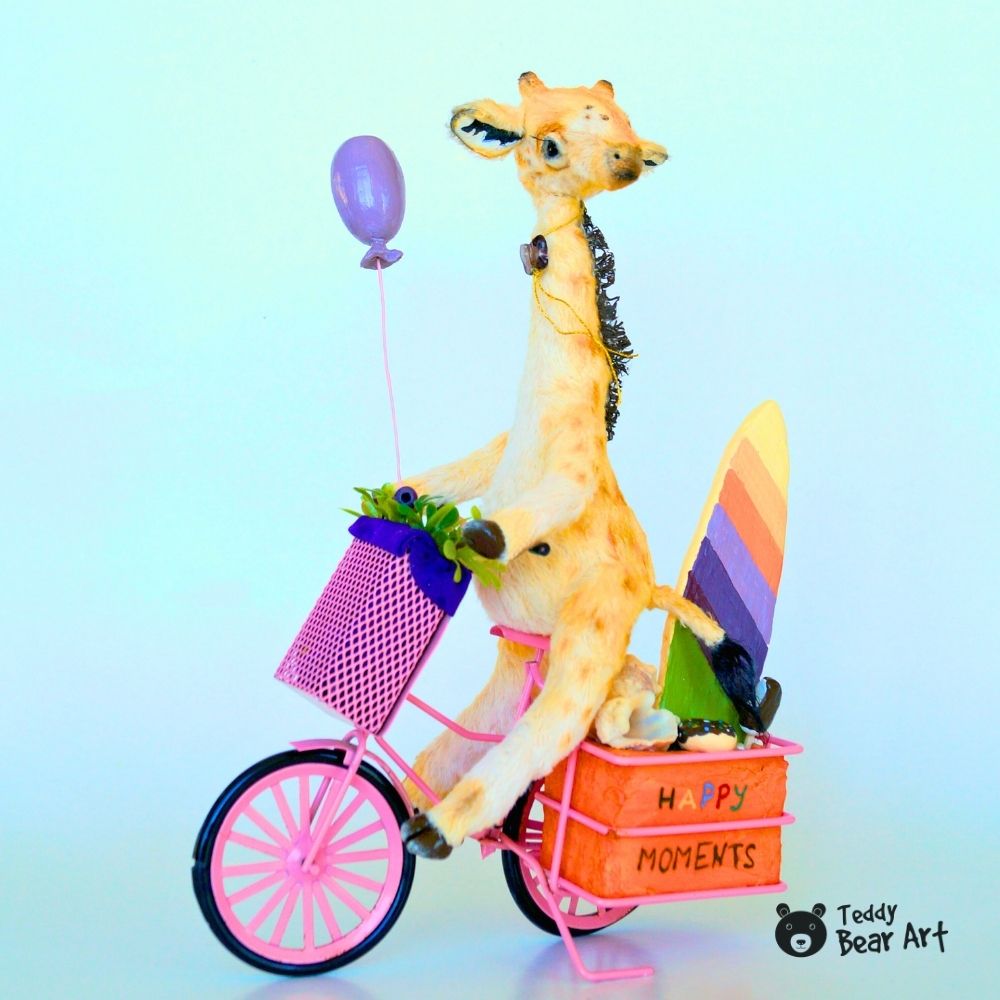
Next, all limb pieces are sewn. Each arm and leg is stitched along the outline and prepared for jointing. To give the giraffe realistic proportions, small hooves are sculpted separately. In this case, hooves are shaped from Milliput White self-hardening clay, adjusted to the correct size, then painted with acrylics and coated with two layers of acrylic varnish to create a smooth protective finish.
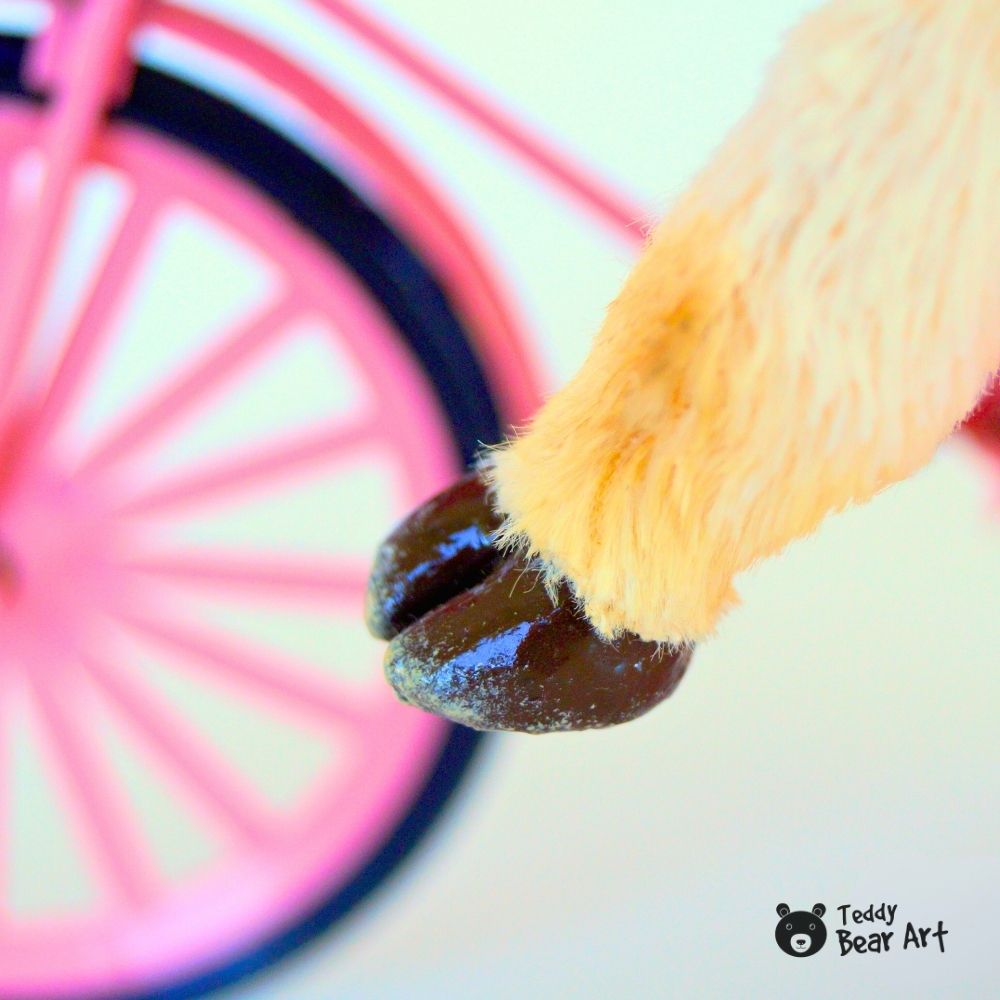
When the hooves are fully dry, they are glued to the ends of the limbs. Discs with cotter pins are inserted, the limbs are filled, and the openings are closed with neat stitches.
3. Assembly and Painting
With all separate parts prepared, the giraffe begins to come to life. First, the head is inserted, ensuring the joint sits securely in place. The arms are added next, followed by the legs.
A small metal weight is placed inside the torso—this material works best for miniature toys, providing the necessary balance without taking much space.

After that, the body is filled with soft synthetic stuffing, and both openings are closed with careful stitches. The entire surface is gently brushed to lift the pile and restore the plush texture.
Now the coloring begins. Oil paints are used here, and only three shades are needed: orange, brown, and black. The basic principle is simple—light before dark. First, a soft layer of orange establishes the base tone.

Then, shadows are added with brown, along with the giraffe’s characteristic spots. Finally, black defines the muzzle, the tips of the ears and horns, and the eyelids, guided by the reference photos for accuracy. The upper eyelids are touched with white acrylic to brighten the expression.
The mane is created from merino wool, needle-felted along the neck, and trimmed evenly. In this case, it is additionally brushed with black acrylic to give the fibers structure and firmness. A tiny thin tail is sewn separately, finished with a small tuft, painted, and stitched in place.
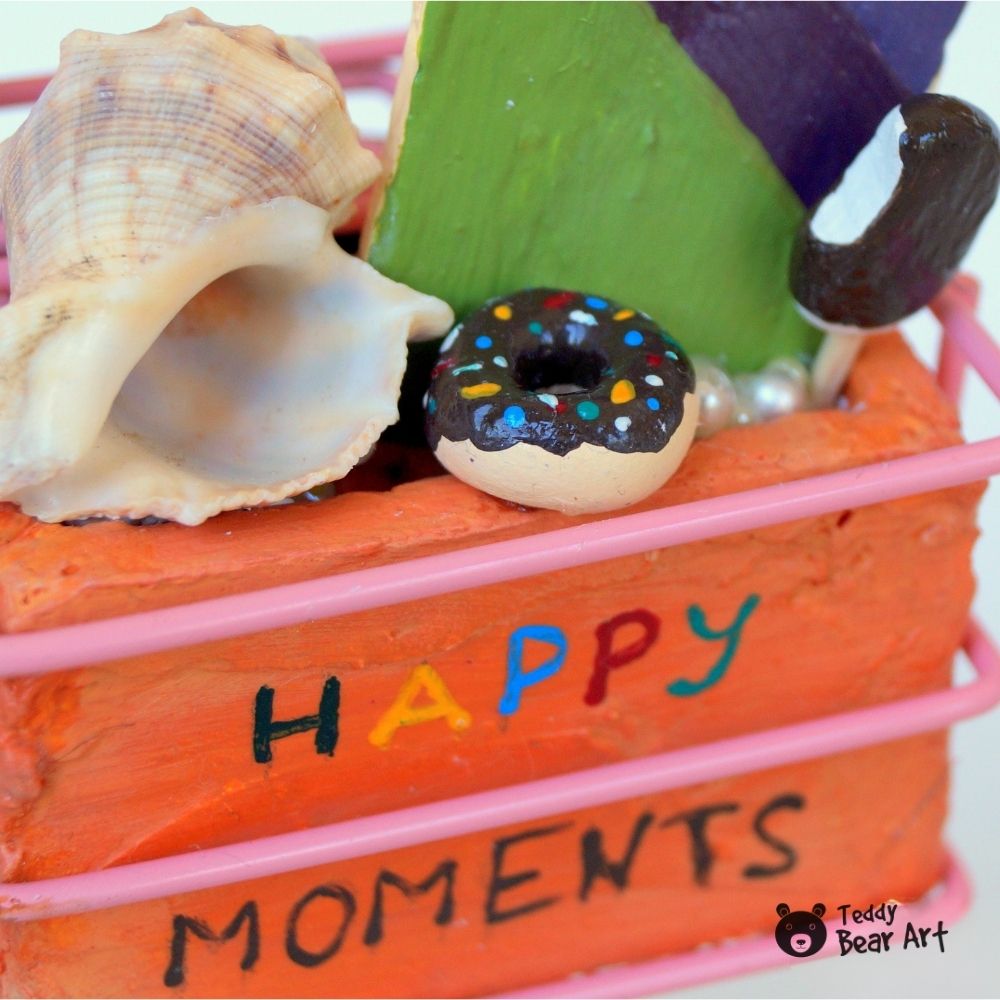
As the final touch, a small cluster of faux eyelashes is glued on and trimmed to the right length to suit the delicate face. The giraffe is then left to dry completely. Once dry, any accessories of your choice can be added—and your miniature giraffe is ready to shine!
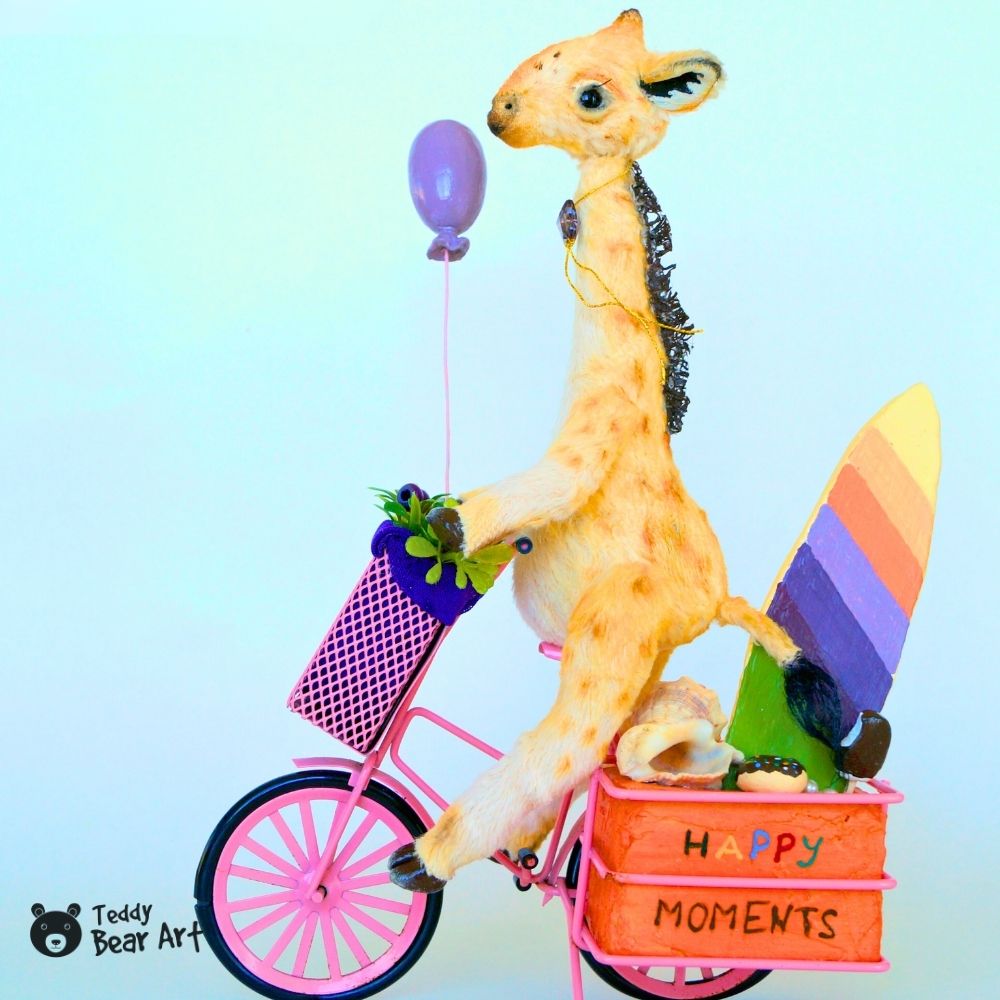
Frequently Asked Questions
1. Can I sell the giraffes made from this pattern?
Yes, absolutely. You’re welcome to sell the finished giraffes you create. The only restriction is that the pattern itself cannot be resold, shared, or distributed.
2. How do I make the little balloon shown in the photos?
The balloon is made from a small decorative foam egg. A tiny clay tip is attached to the bottom, a wire is inserted, and the whole piece is painted with acrylics and sealed with acrylic varnish.
3. Can I scale the pattern up or down?
Yes, you can resize the pattern to any scale you like. Just keep in mind that the final giraffe will look different from the one shown in the photos.
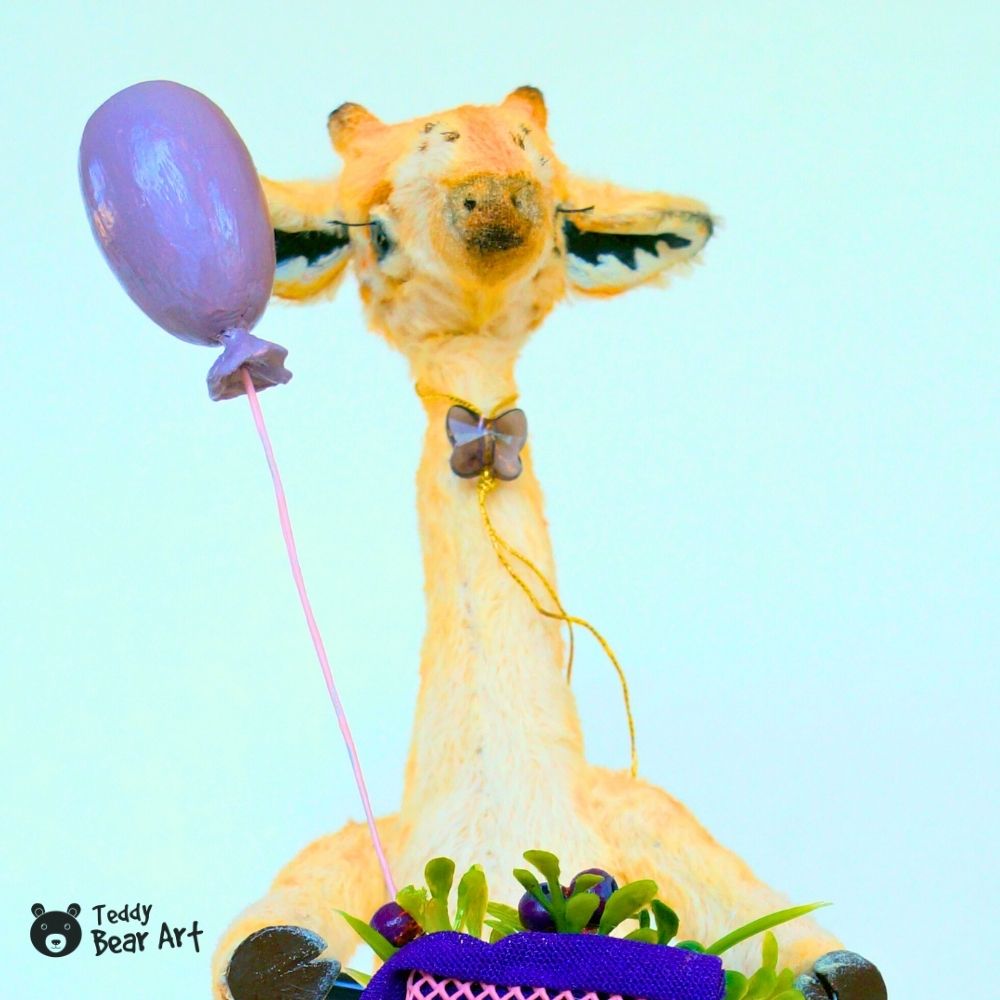
Before You Go
If you’ve been wondering how to make a giraffe stuffed animal, now you have a complete step-by-step plan, from sewing and stuffing to painting and finishing touches. Feel free to create your own versions, experiment with colors, accessories, and sizes, and let each giraffe have its own character and charm. Happy crafting!
Get Free Patterns & Be the First to Know!
Want free teddy bear patterns, exclusive tutorials, and a chance to win craft supplies?
Join our Facebook page for behind-the-scenes tips and creative teddy bear inspiration.
Also, look for the subscribe form in the middle of this article to join our next giveaway, and be the first to hear our latest news and receive new patterns as soon as they’re released.
Let’s create together and share the joy of teddy bear making!

